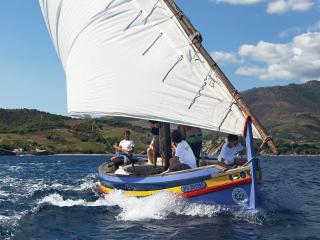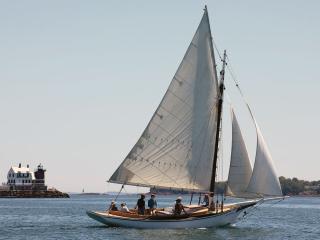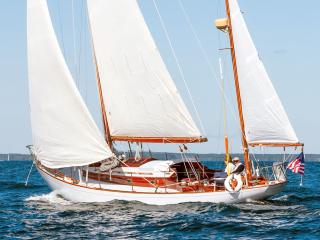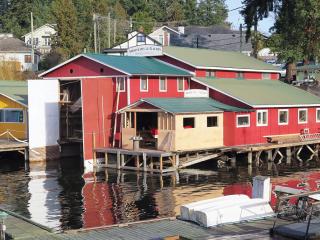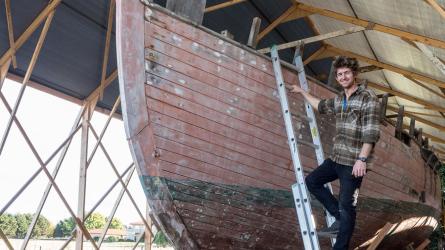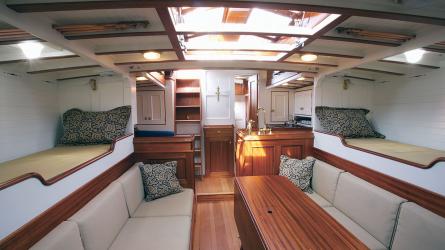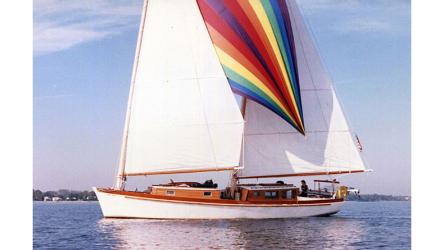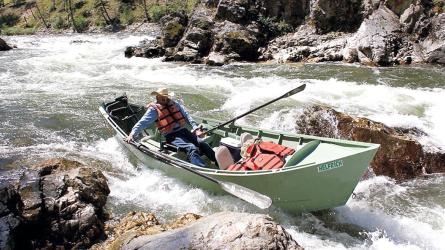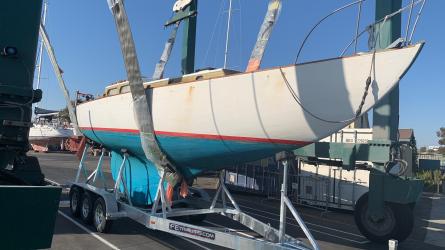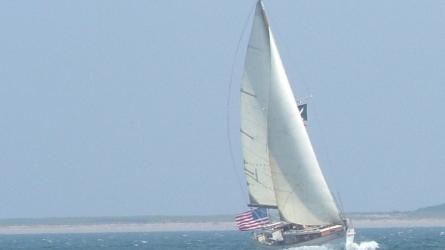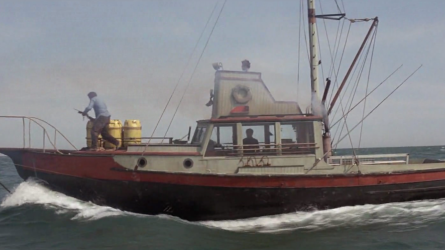September / October 2019
Mullet Boats of Auckland
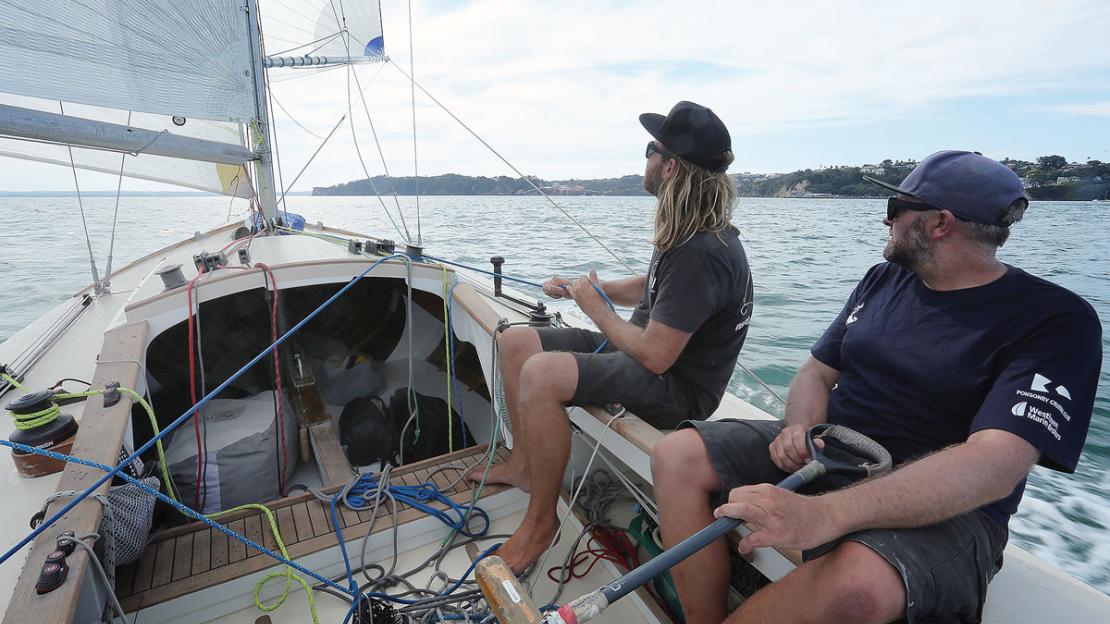
Reuben Cameron-Harker steers VALERIA as Ben Freedman trims the spinnaker in the 2019 Lipton Cup.
Auckland, New Zealand, was founded in 1840, and many local fishing boats were purpose-built for its waters. Among those was a boat used specifically for catching mullet in the estuaries within the Hauraki Gulf. It evolved into a recognizable type, typically around 24' long with a generous beam for load-carrying and stability, a shallow draft with a centerboard for access to where the mullet were, and a small cuddy to allow the crew of two or three to occasionally sleep. They gradually became known as mullet boats, and by the 1880s that term had come into general use.
The boats often worked in tandem, and when they reached the fishing grounds each crew would drop sail, brail the boom up parallel with the mast, and remove the transom-hung rudder so they could deploy the net over the stern. One or two large sweeps would be used for maneuvering.
Once the crew had loaded a respectable catch of a ton or more, they would set sail for home. The generous gaff sloop or cutter rig of around 400 sq ft would carry them in the prevailing westerly, 20 miles directly upwind, back to Auckland’s wharves, where the first boats to arrive would secure the best price. Once back at the docks, the crews would usually sell the fish right from the boat to merchants, canners, or consumers.
By the early 1900s, the days of fishing for mullet under sail were numbered. This was mainly due to the development of powered vessels, though many sailing mullet boats were converted for power. In addition, the rapidly expanding population of Auckland had exhausted the mullet stocks. All of this might have meant an end to this unique boat, but the local sailing population had already noted the type’s qualities, and the mullet boats weren’t quite done yet.
To read the rest of this article:
Click the button below to log into your Digital Issue Access account.
No digital access? Subscribe or upgrade to a WoodenBoat Digital Subscription and finish reading this article as well as every article we have published for the past 50+ years.
ACCESS TO EXPERIENCE
Subscribe Today
1 YEAR SUBSCRIPTION (6 ISSUES)
PLUS ACCESS TO MORE THAN 300 DIGITAL BACK ISSUES
DIGITAL $29.00
PRINT+DIGITAL $42.95
Subscribe
To read articles from previous issues, you can purchase the issue at The WoodenBoat Store link below.
 Purchase this issue from
Purchase this issue from
